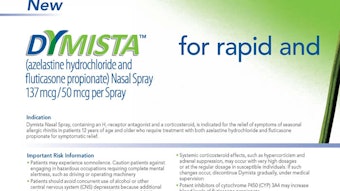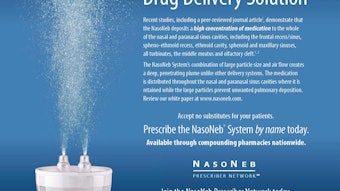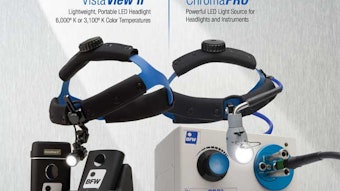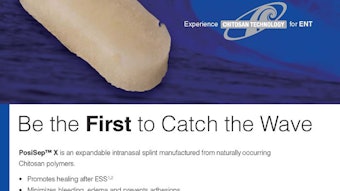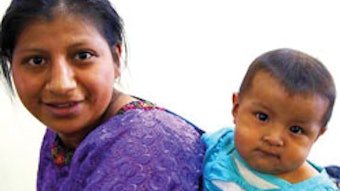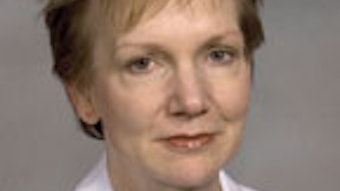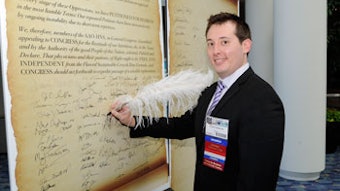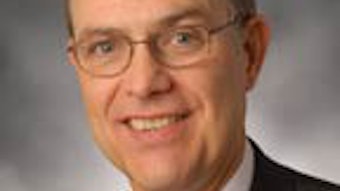Your Strategic Partner
James L. Netterville, MD, AAO-HNS/F President We didn’t go to medical school so we could be politicians. We didn’t take the Hippocratic Oath in order to spend hours on coding. We didn’t pass the boards so we could parcel out cures according to the insights of insurance actuaries. Yet, here we are in 2012, battling disease and bureaucracies. As Vanderbilt University Medical Center’s director of the Division of Head and Neck Surgical Oncology, I have worked in medical and educational environments worldwide and felt confident in that work at home and abroad. But building and maintaining a professional career in our own healthcare delivery environment now requires more than staying abreast of the best patient care. We all must be ready to work with regulatory agencies and governing bodies. Practicing medicine has never been more demanding or unpredictable. Fortunately, early in my career my mentors encouraged my membership in the AAO-HNS. Our Academy has been a mainstay for many in the specialty as it monitors these socioeconomic and policy activities on every front. This has allowed us to keep medicine as our primary focus. When I had the honor last year of being named your AAO-HNS/F President-Elect, I was eager to gain a deeper understanding of these challenges. With the benefit of data from the latest member survey, I now understand more fully what your main concerns are, and how the Academy has prepared—through attention to its long-term strategic plan—to focus its strategy and address your concerns. As I begin my presidential year, I am happy to say the AAO-HNS/F is in an excellent position to advance these long-term strategies with a deeper intentionality. Our past years’ diligence in solidifying our infrastructure and strategic position has paid off. We are ready to push forward from positions of strength for bigger strategic gains. So, in preparation for the AAO-HNS/F leaders’ annual strategic planning events in December, this is a great time for me to remind you of the broad strategic areas of our activity to date. They are grouped by areas of identified concerns: Broad Strategy: Advocacy and Health Policy Enhance our legislative outreach efforts to policymakers and patients to increase the general awareness of the specialty by the public. Enhance our grassroots activities to recognize and incentivize member involvement in our legislative and political programs. Integrate health policy-specific priorities, using input from the Physician Payment Policy (3P) Workgroup, to maintain our visibility and credibility on socioeconomic and federal regulatory issues. Advocate for appropriate reimbursement and fair policies with Medicare and private payers, providing members with information and guidance on reimbursement issues encountered at the state and local level. Broad Strategy: Research and Quality Create a continuum of research and quality activities that are aligned with education and lifelong learning needs. Build a sustainable infrastructure to test, pilot, and promote adoption of research and quality products such as guidelines, measures, lifelong learning projects, and evidence-based medicine. Demonstrate the value of strong research and quality education and granting programs to the specialty. Broad Strategy: Education and Knowledge Consolidate and enhance the otolaryngology practice gap analysis and needs assessment process. Develop the next generation of otolaryngology education and knowledge resources through continuous assessment and redesign. Provide resources for board certification preparation, business of medicine, trauma, robotic surgery, surgical simulation, and resident education. Increase member engagement in generation and usage of education and knowledge resources to improve care and outcomes. Broad Strategy: Membership Strength and Unity Improve the member experience by providing meaningful engagement opportunities and encourage participation in Academy activities to increase the overall relevance. Enhance and articulate the member value for all member segments. Support physician’s ability to meet requirements of healthcare reform, third-party payers, credentialing, certification, and licensure. Facilitate collaboration and communication among the specialty societies to enhance and strengthen the specialty. Broad Strategy: Sustainability Provide exceptional stewardship of AAO-HNS/F assets. Enhance the value of the AAO-HNS/F brand. Leverage non-dues revenue streams. Support a culture of philanthropy. Review and update governance documents. Enhance the AAO-HNS/F website. Through benchmarked milestones and set measurable goals, each of these strategic areas has received considerable attention during the past three years. You will find the latest accomplishments in the Annual Report in next month’s Bulletin. In fact, quoting from the Treasurer’s Report of the Academy Secretary/Treasurer and the Chief Operating Officer: John W. House, MD, and Brenda Hargett, CPA, CAE, in the most recent Board of Directors report, “…the increasing stabilization of financial management, budgeting, and reporting better positions AAO-HNS/F to take advantage of opportunities and challenges in the upcoming year.” So, my presidential year’s challenge will be to ensure that the work of the past three can be used to bring into focus those paramount activities that will be most needed and sustaining for the immediate years to come. I look forward to your support and to the challenge.
James L. Netterville, MD, AAO-HNS/F President
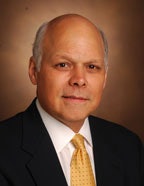 James L. Netterville, MD, AAO-HNS/F President
James L. Netterville, MD, AAO-HNS/F PresidentWe didn’t go to medical school so we could be politicians.
We didn’t take the Hippocratic Oath in order to spend hours on coding.
We didn’t pass the boards so we could parcel out cures according to the insights of insurance actuaries.
Yet, here we are in 2012, battling disease and bureaucracies.
As Vanderbilt University Medical Center’s director of the Division of Head and Neck Surgical Oncology, I have worked in medical and educational environments worldwide and felt confident in that work at home and abroad. But building and maintaining a professional career in our own healthcare delivery environment now requires more than staying abreast of the best patient care. We all must be ready to work with regulatory agencies and governing bodies. Practicing medicine has never been more demanding or unpredictable.
Fortunately, early in my career my mentors encouraged my membership in the AAO-HNS. Our Academy has been a mainstay for many in the specialty as it monitors these socioeconomic and policy activities on every front. This has allowed us to keep medicine as our primary focus.
When I had the honor last year of being named your AAO-HNS/F President-Elect, I was eager to gain a deeper understanding of these challenges. With the benefit of data from the latest member survey, I now understand more fully what your main concerns are, and how the Academy has prepared—through attention to its long-term strategic plan—to focus its strategy and address your concerns.
As I begin my presidential year, I am happy to say the AAO-HNS/F is in an excellent position to advance these long-term strategies with a deeper intentionality. Our past years’ diligence in solidifying our infrastructure and strategic position has paid off. We are ready to push forward from positions of strength for bigger strategic gains. So, in preparation for the AAO-HNS/F leaders’ annual strategic planning events in December, this is a great time for me to remind you of the broad strategic areas of our activity to date. They are grouped by areas of identified concerns:
Broad Strategy: Advocacy and Health Policy
- Enhance our legislative outreach efforts to policymakers and patients to increase the general awareness of the specialty by the public.
- Enhance our grassroots activities to recognize and incentivize member involvement in our legislative and political programs.
- Integrate health policy-specific priorities, using input from the Physician Payment Policy (3P) Workgroup, to maintain our visibility and credibility on socioeconomic and federal regulatory issues.
- Advocate for appropriate reimbursement and fair policies with Medicare and private payers, providing members with information and guidance on reimbursement issues encountered at the state and local level.
Broad Strategy: Research and Quality
- Create a continuum of research and quality activities that are aligned with education and lifelong learning needs.
- Build a sustainable infrastructure to test, pilot, and promote adoption of research and quality products such as guidelines, measures, lifelong learning projects, and evidence-based medicine.
- Demonstrate the value of strong research and quality education and granting programs to the specialty.
Broad Strategy: Education and Knowledge
- Consolidate and enhance the otolaryngology practice gap analysis and needs assessment process.
- Develop the next generation of otolaryngology education and knowledge resources through continuous assessment and redesign.
- Provide resources for board certification preparation, business of medicine, trauma, robotic surgery, surgical simulation, and resident education.
- Increase member engagement in generation and usage of education and knowledge resources to improve care and outcomes.
Broad Strategy: Membership Strength and Unity
- Improve the member experience by providing meaningful engagement opportunities and encourage participation in Academy activities to increase the overall relevance.
- Enhance and articulate the member value for all member segments.
- Support physician’s ability to meet requirements of healthcare reform, third-party payers, credentialing, certification, and licensure.
- Facilitate collaboration and communication among the specialty societies to enhance and strengthen the specialty.
Broad Strategy: Sustainability
- Provide exceptional stewardship of AAO-HNS/F assets.
- Enhance the value of the AAO-HNS/F brand.
- Leverage non-dues revenue streams.
- Support a culture of philanthropy.
- Review and update governance documents.
- Enhance the AAO-HNS/F website.
Through benchmarked milestones and set measurable goals, each of these strategic areas has received considerable attention during the past three years. You will find the latest accomplishments in the Annual Report in next month’s Bulletin. In fact, quoting from the Treasurer’s Report of the Academy Secretary/Treasurer and the Chief Operating Officer: John W. House, MD, and Brenda Hargett, CPA, CAE, in the most recent Board of Directors report, “…the increasing stabilization of financial management, budgeting, and reporting better positions AAO-HNS/F to take advantage of opportunities and challenges in the upcoming year.”
So, my presidential year’s challenge will be to ensure that the work of the past three can be used to bring into focus those paramount activities that will be most needed and sustaining for the immediate years to come. I look forward to your support and to the challenge.
